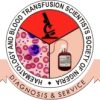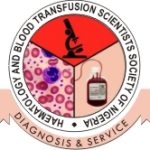Akpan, P. A., Etura, J. E., Asuquo, B. L.
AJLHTS: Original Paper
Abstract
Introduction: Street children refer to persons below 18 years who depend on the streets for their survival. These Street Children constitute a vulnerable group with regards to proper nutrition and healthcare hence this study was carried out to assess their full blood counts and some iron parameters.
Methods: One hundred and eighty (180) children living on the street and homes in Calabar Metropolis were recruited into this study. Ethical approval was sought and obtained from the Cross River State Ministry of Health, Calabar. Consent was obtained from 90 apparently healthy children on the street while parents/guardians gave consent for 90 apparently healthy children living in homes (control). Demographic information was obtained by interview and weight and height measurements were taken using standard instruments; the body mass index was calculated and used to categorize the nutritional status of subjects. Haematological and iron parameters were determined by standard techniques. Data were analysed using a student t–test on SPSS version 21 with significance level set at P≤0.05.
Results: Street Children comprised more males (53.3%) than females with 82.2% being out of school. Strategies employed for survival include receiving benefits from support groups (62.2%), engaging in odd jobs (60%) and begging for alms (100%). The body mass index of Street Children showed that 75.55% of them were healthy in terms of their nutritional status (BMI 16.2-25.5) while those that were underweight (<16.2) and obese (>27.9) made up 20% and 4.45% respectively as compared to 82.23% healthy weight, 2.22% underweight, 11.10% overweight (>25.5-27.9) and 4.45% obese observed for their counterparts who live in homes. The red cell
Afr J Lab Haem Transf Sci 2023, 2(1): 35-44
Full blood count and some iron parameters of Street Children in Calabar, Nigeria
distribution width (RDWCV) was 13.61±3.25 and this was significantly lower (P=0.001) than 16.53±3.28 versus the control, while the total white blood cell count (7.87±4.18 x 10′/L) was significantly higher (P=0.05) for street children in comparison with 5.90±1.94 X 10′/L obtained for children in homes. Other haematological, as well as iron parameters, were comparable (P>0.05).
Conclusions: The haematological parameters of Street children differed from children in homes in terms of a lower red cell distribution width and higher total white cell count. Twenty percent of street children were underweight as indicated by a lower BMI for their age. It is recommended that individuals, corporate bodies and the Government should unite to end street living for children.
Keywords: Street Children, blood counts, iron, Haematological, Nigeria

